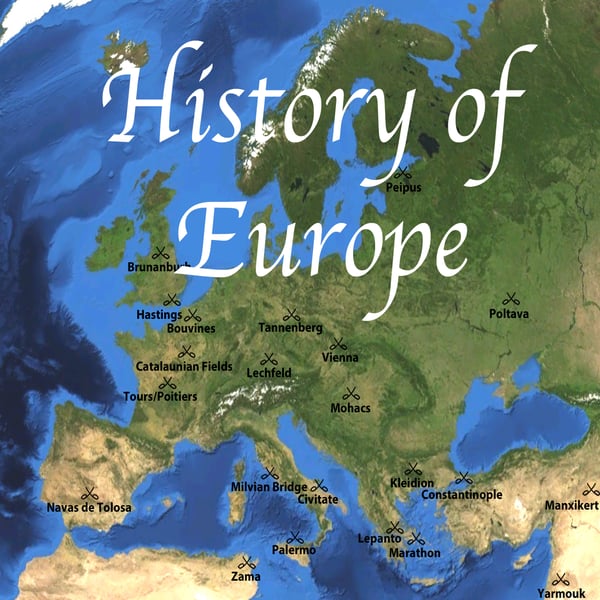77.4 Russian Civil War, Conclusion
A History of Europe Key Battles
Carl Rylett
4.4 • 756 Ratings
🗓️ 8 August 2025
⏱️ 32 minutes
🧾️ Download transcript
Summary
The Bolsheviks face numerous opponents across Russia, and struggle to gain control of all lands of the old Tsarist Empire.
The White anti-Bolsheviks make a plan to move on Moscow
www.historyeurope.net
www.patreon.com/historyeurope
Picture: By Hoodinski - Own work, CC BY 3.0, https://commons.wikimedia.org/w/index.php?curid=16761719
Hosted on Acast. See acast.com/privacy for more information.
Transcript
Click on a timestamp to play from that location
| 0:00.0 | Welcome to a history of Europe, the interwar years. This is the fourth and final part on the Russian Civil War. |
| 0:17.0 | In the last few weeks, I've given the background to the Civil War and the description |
| 0:24.1 | of the first and the middle parts. If you haven't yet done so, it might be good to go back |
| 0:29.8 | and listen to those episodes before this one. But if you have already, or want to continue |
| 0:34.8 | anyway, then let's begin. |
| 0:45.3 | November 1918 was an important month in the history of the Russian Civil War. |
| 0:53.5 | Thursday 7th of November, the anniversary of the Bolshev revolution was a day of great celebrations in Moscow. In the morning, Lenin unveiled a statue |
| 0:56.6 | of marks and angles in front of the Bolshoi theatre and then had a mass singing of the Marseille |
| 1:02.7 | and the Internationale in the third square. Ten days later, far away from Moscow in the city of Omsk, |
| 1:17.0 | Admiral Colchuk took power in a coup to become the leader of the anti-Bolsheviks of Siberia. |
| 1:22.0 | But it was the collapse of Germany in the First World War that was the main event. |
| 1:28.3 | The subsequent crises in Berlin, Vienna and elsewhere in central and eastern Europe gave increased possibilities for Bolshevik revolutions across the continent. |
| 1:34.0 | It also gave the Soviets the opportunity to recover land they had signed away at Brest-Litovsk earlier in the air. |
| 1:41.6 | Their first targets were the Baltic states. The three years following, the |
| 1:50.0 | armistice are known in the national histories of the Baltic states as the wars of independence. |
| 1:56.7 | In Estonia, as the war ended and the German army started dispersing, |
| 2:01.4 | the nationalist activists who had proclaimed independence began the process of creating political institutions. |
| 2:08.2 | Elections had to be held, ministries created, revenues raised, border secured, |
| 2:13.5 | and international recognition sought. |
| 2:17.0 | As centre-left, nationalist government quickly took power |
| 2:20.1 | which was able to combine nationalism and social reform by dividing the states of the German-speaking |
| 2:26.5 | landlords. Then in the second half of November 1918, Bolshevik troops, with support from the Soviet Russian government, invaded. |
... |
Please login to see the full transcript.
Disclaimer: The podcast and artwork embedded on this page are from Carl Rylett, and are the property of its owner and not affiliated with or endorsed by Tapesearch.
Generated transcripts are the property of Carl Rylett and are distributed freely under the Fair Use doctrine. Transcripts generated by Tapesearch are not guaranteed to be accurate.
Copyright © Tapesearch 2025.

